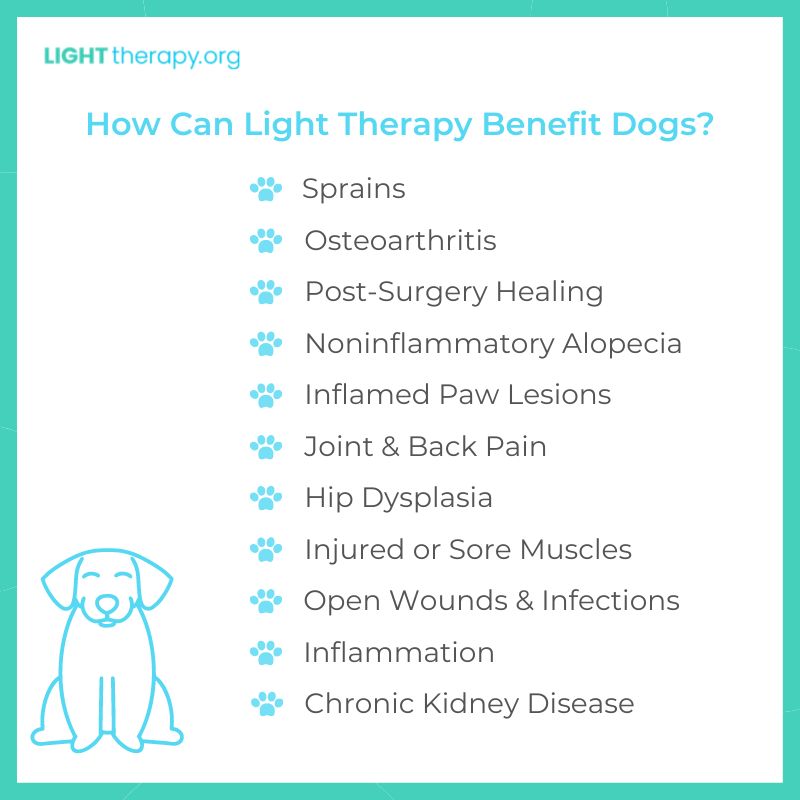Red Light Therapy for Dogs at Home vs. the Veterinarian
The days of guard dogs are mostly behind us. Nowadays, dogs are likely to be thought of as a family member. In fact, many child-free couples consider their pets to be an adequate stand-in for having kids of their own.
What does this newfound emphasis on pet parenthood mean for advances in veterinary technology? Those who opt for pets over babies are more than willing to invest in the health and wellbeing of their chosen dependents, meaning more investment capital may be available for emerging animal treatment options.
One technology that’s been gaining popularity in veterinary medicine is light therapy, especially red light therapy for dogs at home. Given the wide range of at-home medical devices on the market, red light therapy is an accessible treatment option for devoted pup parents.
What Is Red Light Therapy?
Red light therapy uses multiple wavelengths of red light to promote healing in the skin and muscles, reduce inflammation, and boost collagen production in skin cells. In humans, red light therapy is used to treat acne breakouts, reduce the physical signs of aging, and improve symptoms of seasonal affective disorder, or SAD. Pet parents are now asking, can this new technology help my dog?
Can Red Light Therapy Help Dogs at Home?
Research has proven that at-home red light therapy is completely safe for both people and dogs. Red light therapy for dogs is a viable treatment option for a wide range of health issues that can ail our canine companions.
For example, a study from 2018 that investigated the effectiveness of near-infrared light wavelengths on canine elbow osteoarthritis yielded very positive results. The study divided the dogs into two groups — a therapy group that received red light therapy treatments and a placebo group that didn’t receive any treatments. A whopping 82% of the dogs who received the therapy showed enough improvement that their medication dosage could be cut in half, while the placebo group saw no improvements whatsoever.
According to this study, red light therapy for dogs can speed up healing after bone surgery, treat noninflammatory alopecia, and heal inflamed paw lesions. All of these results are excellent news for dog owners who adore their pups!
Based on recent studies and other research in the field, veterinarians have discovered a wide range of ailments that red light therapy could treat in dogs. These include joint and back pain, hip dysplasia, injured or sore muscles, sprains, open wounds and infections, inflammation, osteoarthritis, chronic kidney disease, and more.

Do All Vets Agree?
Despite the overwhelmingly positive results of multiple studies and the increased use of red light therapy on people, using red light therapy for dogs at home is still controversial in veterinary medicine. This is partly because it’s a very new treatment option, and while initial studies have shown positive results, more research is needed.
There are plenty of vets who swear by the positive results of using red light therapy on their furry patients, but others may not consider it a viable treatment option, especially for more complex medical problems. A level of hesitancy is normal in the medical field when new technologies are introduced to both people and pets.
But if you’re interested in red light therapy for your dog at home, you’ll likely be able to find a local vet willing to consider the benefits of this treatment option.
Red Light Therapy for Dogs at Home
Once you’ve done your research and decided that red light therapy is a treatment option for your dog, you may be wondering where to go from here.
The first step is finding a device that’s safe and effective to use on pets. One of the most popular options is the LumaSoothe, which is advertised to use a low, non-invasive level of light to clear skin infections and ease joint pain, as well as address many other health concerns. Another is the B-Cure Laser Vet, which is based in LLLT (Low-Level Laser Therapy) and is advertised to accelerate your pet’s natural healing process. While both are a little pricey, the LumaSoothe is the more affordable choice.
After you choose the device that’s right for you and your dog, it’s time to start the light therapy treatments. Make sure your dog is relaxed and comfortable. Like any other medical procedure, keeping your pet calm is an important part of the healing process. It’s best to start the treatment after your dog has eaten and had a long walk. Keep water and treats nearby.
Gently part your dog’s fur in the treatment area to ensure the light therapy makes as much contact with the skin as possible. Follow the device’s instructions for the length and frequency of each treatment. If you’re consistent and patient, you should see results in a matter of weeks or even days.
Talk to Your Vet
No matter what condition your dog is suffering from, your first step in the healing process should always be to schedule an appointment with your veterinarian. Even if you swear by the benefits of light therapy, the best thing for your dog may be a combination of light therapy and other treatment options.
Even if your regular vet is skeptical of light therapy, it’s important to start there anyway. Your vet will have knowledge of your dog’s medical history and will know if light therapy may interfere with any pre-existing conditions. Additionally, you should never interfere with your dog’s current treatments or medications without first consulting your vet.
If you’re determined to get light therapy for your dog, research qualified vets in your area who have experience with this type of treatment. Once you find a vet you’re comfortable with, you can discuss the benefits and potential drawbacks of light therapy for your dog’s unique medical condition and background.
If you ultimately decide light therapy is a safe option for your pup, you can then choose an at-home medical device that fits your needs and your budget.